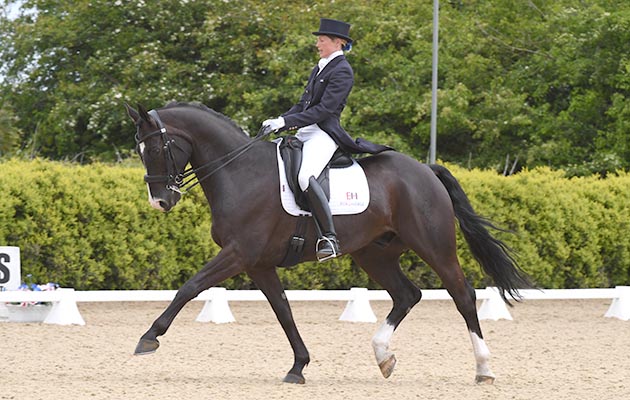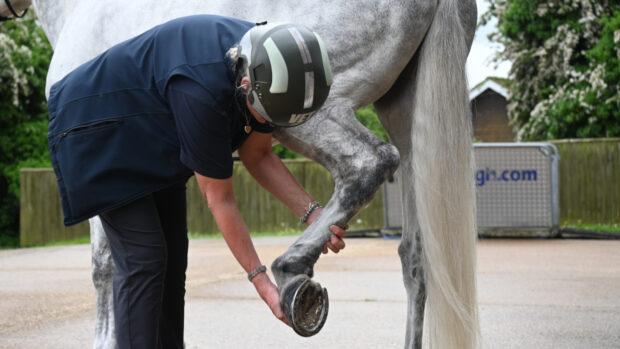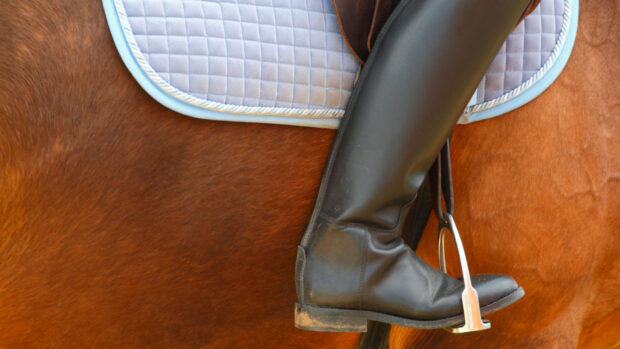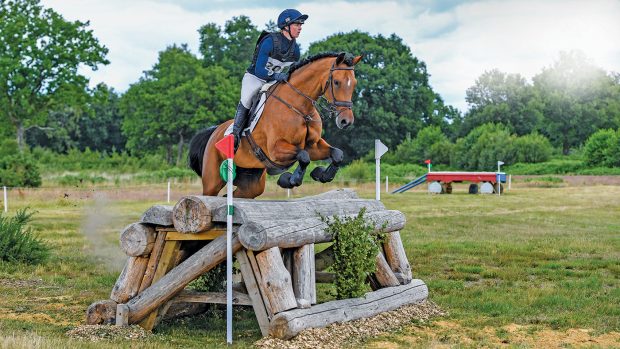In our sport, horse injuries are far from rare, but perhaps they’re often not the most discussed topic. Regardless of how it was done or what the prognosis is, an injury can be devastating for the team as well as the rider, and the road to recovery is often lengthy and tense for all involved. We caught up with two professional riders, a vet and a therapy centre to get their experience of injuries, recovery, and comebacks.
Hugh Somerville BVSc Cert AVP (ESO) MRCVS from Loch Leven Equine Practice has been part of the veterinary team at Blair Castle International Horse Trials for a number of years. Hugh explains why, in some cases, riders don’t share the nature of a horse’s injury.
“It’s not something that is often discussed at top level,” says Hugh. “But the truth is it happens to everyone — even when a professional rider has a run of really bad injuries it’s rarely to do with bad management, just rotten luck.
“Professionals are under a huge amount of pressure to keep these horses sound for their owners. There is often lots in the media when the recovery goes well and they return to competition but people don’t like to publicly talk about when it goes wrong.”
An injury can be a devastating blow at any time for so many reasons. Obviously the horse being injured is the main concern, but there’s a lot of emotion connection to hopes, dreams and plans that were in place for that horse, as well as worries and concerns for rehabilitation.
“The first few times a horse who’s part of your team gets injured, well, it’s just gutting and knocks everyone back a lot,” says five-star event rider Imogen Murray. “Everyone’s confidence takes a real knock and it’s a very worrying time, especially in that gap between when you suspect something isn’t right and getting the diagnosis.”
Imogen experienced this first hand a number of years ago when a potential junior team horse sustained an injury that ruled him out of competition for a number of months.
Sarah Turner is a dressage rider who made H&H headlines when her ride, Eduardo (pictured below), won the inter I class at Keysoe’s High Profile Show at the end of 2018. The fact that the horse’s owner was told he would never compete above elementary after an injury made it even more special.
“Before I knew Eduardo, he’d sustained a nasty injury in the stable at a show,” explains Sarah. “He’d ruptured a bone cyst and had sustained collateral ligament damage. I met him and his owner when he was in rehab after this, after they’d been told that he’d never compete beyond elementary level again. It was though that the small circles and the increased difficulty in the lateral work were likely to cause issues and he just wouldn’t be up to it.”

Sarah and her team started slowly and were very careful with the training and rehab keeping the nature of the injuries in mind and exercises that could support this area.
“Once I got him to small tour level and he was training consistently at home, we decided to go for an MRI scan to just confirm that what we were doing wasn’t having a negative impact on the injury — and it wasn’t. This gave me the confidence to keep training and progressing as his body was obviously coping.”
“We see many horses return to competition after successful rehab,” says Kerry-Anne Bourne, equine therapy centre manager at Hartpury. “We sometimes see them coming back even better than before time off. Of course, there are a lot of factors at play such as the nature of the injury, and we also work very closely with farriers, vets, osteopaths and physios to help the horse recover and come back.”
Confidence is a big issue. In addition to the obvious physical impact and injury can have on the horse, the confidence that the rider feels around the horse and particularly how it’ll cope during a competition can have a massive impact, but does grow over time as the horse continues to perform well.
“When a horse that’s been injured comes back into work it can be really nerve-wracking,” says Imogen. “During rehab, we always look for milestones that we can reach and feel a real sense of achievement when we reach these, but even when all these are met, the vet’s happy and all training has gone well, you get nervous. You try and tell yourself you’ve done everything you can and to treat him like a normal horse but you do extra checks and as a rider you ask yourself if he feels OK all the time, even though you’d be unlikely to pick up some minor injury when the horse is full of adrenaline.”
“There are obviously lots of different injuries all with different treatment options but our aim is always to promote healing, minimise scar tissue and importantly give the horse as much time as required to fully recover, using evidence-based medicine,” explains Hugh. “Correct management plays a huge part in recovery and, ultimately, a comeback to competition.”
To help give the horse maximum chance of a full recovery, Hugh sends patients home with a detailed rehabilitation programme, advises regular repeat scans and X-rays during the rehab period, and also checks during the season.
Imogen has found that, in addition to following the vet’s advice, time is a huge factor.
“We’ve found that giving the horse more time off is better in the long run, it’s amazing what time can do. It can feel frustrating and like it’s taking a long time but always focus on when they’re ready and not your plan.”
Article continues below…
You might also be interested in:

Diary of a equine tendon injury including 52-week strict rehab and the ‘magic boot’
H&H’s website editor shares her experience of successfully rehabbing a significant tendon injury

Subscribe to Horse & Hound magazine today – and enjoy unlimited website access all year round
Sarah agrees with the above, in fact, a combination of the correct management and time at every stage have been two things that she credits in Eduardo’s recovery: “We’ve been at small tour level for four seasons as, although he’s ready to step up, I want him to be as strong as possible, to help his body. We also make sure his weight is a key factor in his management regime; all horses should have their weight monitored but we don’t let his fluctuate at all.
“If I gave some advice it would be to be realistic when a horse is coming back into work, but then allow yourself to dream a little.”
For all the latest equestrian news and reports, don’t miss Horse & Hound magazine, out every Thursday



